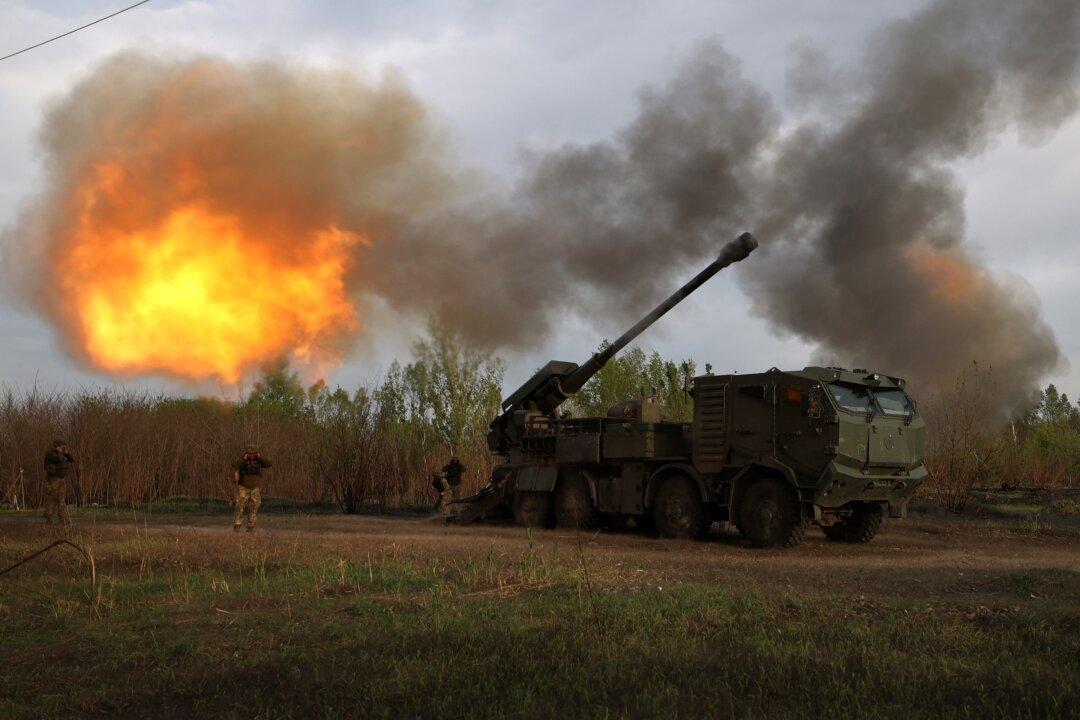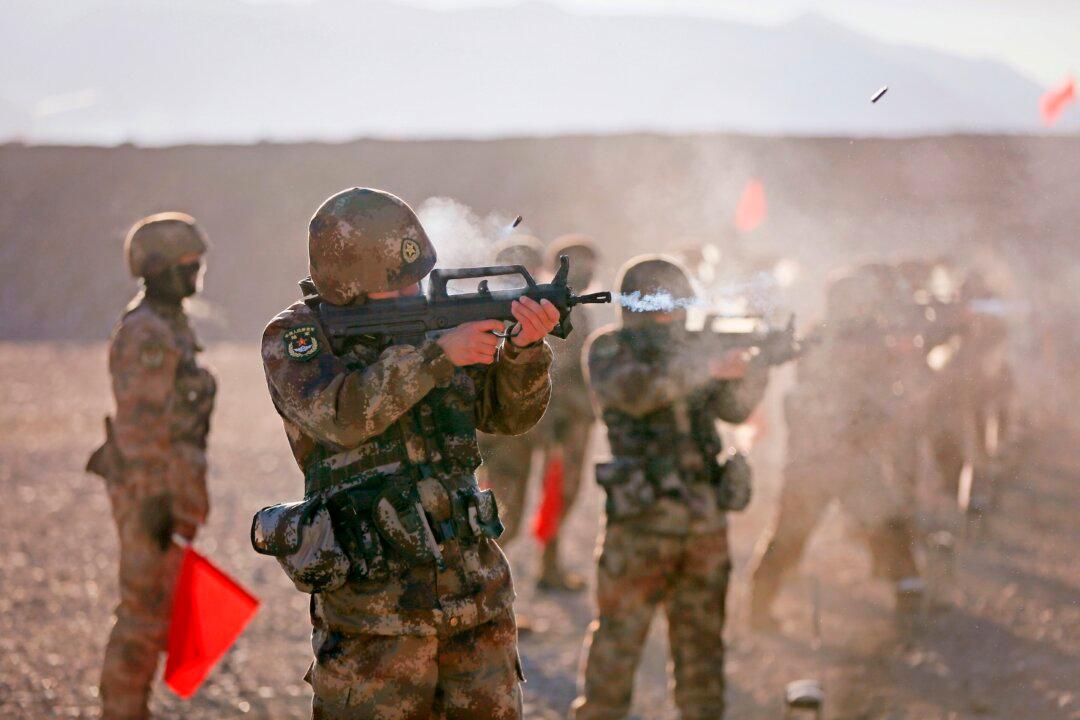Commentary
The passage of the $60.84 billion Ukrainian military aid package on April 20 by the U.S. Congress and swift approval on April 23 by the U.S. Senate probably won’t stop Russia from winning the war.
But it will give Ukrainian President Volodymyr Zelenskyy enough money to spread around to stay in power long enough to ensure that Ukraine will continue to be demilitarized to a level and depth that Russian President Vladimir Putin could never have imagined two years ago for many more death-filled months.
But before discussing how more aid leads to Ukraine’s demilitarization, let’s look at exactly what is in the $60.84 billion package.
Ironically, US Aid to Ukraine Includes Funding for Border Control
Ironically, the Ukraine emergency military package (H.R. 8035) that House Speaker Mike Johnson stated would need to contain provisions for securing the U.S. border before he supported it does not contain any such provisions, but it does contain $300 million for Ukraine’s state Border Guard Police Service and National Police to fund their efforts to keep control of Ukraine’s borders.Now when you first hear of money for border control, especially if you live in the United States, you think of keeping people out. In the case of Ukraine, this would mean keeping people coming into Ukraine from friendly neighboring countries such as Poland, Hungary, and Slovakia. But with news reports of Ukrainian men trying to escape Ukraine to avoid being sent to the front lines, it is very possible the funds will be used in part to keep Ukrainians, especially men, in Ukraine.
The $300 million is only a small part of the overall Ukraine military aid package, which, according to The Heritage Foundation, includes $48.43 billion in military aid to Ukraine broken down into:
- “$19.85 billion for the replenishment of U.S. military weapons (intended to allow for increased transfers of weapons to Ukraine under Presidential Drawdown Authority)
- “$14.8 billion support for the Department of Defense (DoD)
- “$13.8 billion in Ukraine Security Assistance Initiative.”
H.R. 8035 Does Not Address Ukraine’s Biggest Shortage
Clearly, H.R. 8035 commits loads of U.S. taxpayer money and military support to Ukraine, but it does not tell us exactly what Ukraine will receive and when it will receive it. We do know of a large number of Bradley fighting vehicles poised at the Polish–Ukrainian border to be transferred to Ukraine, but some more armored fighting vehicles are not what Ukraine needs. It needs massive amounts of air defense systems and artillery ammunition.Given the depleted nature of U.S. and NATO weapon stocks and how long it will take to rebuild those stocks, it is naïve to believe that the emergency military aid package just passed by the U.S. Congress is going to be a game changer, even if Ukraine was not suffering from an even more critical shortage—manpower.
That Ukraine is suffering from a manpower shortage is evidenced by Ukraine’s frantic efforts to mobilize another 500,000 men. And it raises the question of why, with Ukraine having initially mobilized nearly 1 million men in arms and then, over the course of war, having mobilized another estimated 1 million men, would it need to mobilize 500,000 more? This question is further sharpened by Mr. Zelenskyy’s claiming that Ukraine has lost only 31,000 killed in action (KIA).
Does it really make sense that Ukraine would be suffering such a shortage of manpower after mobilizing 2 million men and suffering only 31,000 KIA? The answer is no. What explains Ukraine’s desperate manpower shortage is that hundreds of thousands of military-age Ukrainian men have fled Ukraine, and sadly, Ukraine has suffered many times more casualties than the ridiculously low 31,000 being touted by Mr. Zelenskyy, or even the 70,000 Ukrainians KIA reported by The New York Times in August 2023.
While the exact number of Ukrainians KIA is really known only by Mr. Zelenskyy’s government, military analyst and international relations expert Col. Douglas MacGregor has come up with an estimate that explains Ukraine’s manpower shortage: 400,000 killed in action, and many more hundreds of thousands wounded and maimed. This shocking estimate was arrived at by using his knowledge of what kind of casualties are generated in artillery-centric war and information from his contacts in U.S. intelligence agencies and Eastern Europe.
An estimate of more than 400,000 Ukrainians being killed in action is shockingly high. But it is particularly shocking if you have been relying on the Ukraine narrative being pushed and paid for by the same media that promoted Russian collusion, the Hunter Biden laptop as Russia disinformation, the mRNA COVID-19 vaccine as being super safe, the 2020 election as being the fairest ever, the Jan. 6 Congressional Committee as being legitimate, the Wuhan lab leak as the origin for the SARS-CoV-2 virus as being a fringe conspiracy, that former President Donald Trump praised Charlottesville racists as being fine people, and so on.
However, when you factor in Russia’s overwhelming advantage in artillery power, drones, long-range strike capability, electronic warfare, and airpower, and then you consider that if Russia had been losing as many men as is being claimed by Ukraine and Western sources, it would not have hundreds of thousands of Russian men reportedly voluntarily (contract soldiers) joining the Russian military, the sad conclusion is that 400,000 Ukrainian soldiers KIA fits the facts far better than the ridiculously low estimates proffered by Ukraine and most Western sources.
This brings us back to the question of the demilitarization of Ukraine. Of course, any Biden administration official and many Republicans would vehemently object to being characterized as playing a role in the demilitarization. However, actions speak louder than words, and many, including myself, have observed that the Biden administration and many Republicans seem to be pursuing a policy of fighting to the last Ukrainian.
Then consider that the longest-lasting and most thorough type of demilitarization is not the destruction of supplies and weapons: It is the killing and maiming of military-age men. Further, consider that the foreign policy blob’s willingness to sacrifice Ukrainian soldiers in what is now likely a hopeless quest to weaken Russia, in combination with Russia’s massive and lethal firepower, has produced what could be characterized as a particularly brutal partnership.
It is a partnership that, thanks to Mr. Zelenskyy’s being propped up by the $61 billion in U.S. aid, will likely see the war, which many believe the United States played a key role in provoking, continue for many more bloody, death-filled months.
Views expressed in this article are opinions of the author and do not necessarily reflect the views of The Epoch Times.






